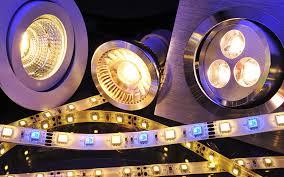LEDs have become incredibly popular in the lighting market, with major retailers like Target and Walmart now selling them. But with so many options available, how can you tell if you're getting the highest quality LED lights? While prices may be dropping, it's essential to ensure that the products you choose are not only cheaper but lower in quality as well. In this article, we will explore four essential questions to ask and considerations to make when shopping for LED lighting to distinguish between quality LEDs and their cheaper counterparts.
Read more: LED Light Blinking Fast? How and Why Turn Signals Blink Fast After Installing LED Lights
Consistent Color: A Mark of Quality
LEDs are renowned for their ability to produce colors across the entire spectrum. When it comes to lighting your home or business, you'll typically want either a soft, yellow hue or a bright, white hue. While personal preference plays a role, it's crucial that all your LED lights exhibit consistent color. High-quality LED lights of the same color temperature will always appear consistent in color when installed. In contrast, lower-quality LEDs will display inconsistent colors, even if they are marketed as having the same color temperature. To ensure color consistency, ask to see LED lights installed before making your purchase.
Thermal Management: The Key to Longevity
One of the critical factors determining an LED's quality is how effectively it manages heat. While LEDs generate less heat than traditional incandescent or fluorescent lights, heat management remains a vital consideration. To achieve their impressive lifespan of 50,000+ hours, LEDs must efficiently dissipate the heat they produce. Quality LED lights employ metal heat sinks with fins to pull away and store the heat generated. In contrast, cheaply made LEDs may use fans or plastic heat sinks, which are more likely to fail, reducing the light's overall lifespan. Pay attention to the thermal management system of the LED lights you are considering to ensure you're investing in long-lasting quality.
Read more: Indoor Growers: Know The Pros Of LED Grow Lights
Directional Light: Tailored Illumination
Unlike incandescent and fluorescent bulbs that emit light in all directions, LEDs are designed to emit light in specific directions. LED chips emit light, and manufacturers utilize lenses to widen or narrow the beam of light. Whether you need a narrow, focused spotlight or a wider floodlight, it's crucial to research the LED's light beam spread ratings before making a purchase. This allows you to choose the LED light that best suits your specific lighting needs, eliminating unnecessary light spillage.
Read more: Why do LEDs flicker – and how to stop it happening
Monetary Savings: Efficiency Matters
While reduced energy bills are a significant advantage of LED lights, there's another way to ensure you're getting the most value for your money. The energy efficiency of a light source is measured in lumens per watt, known as efficacy. Lumens measure the amount of light output, while watts measure the power consumed by the light source. Therefore, efficacy quantifies the amount of light produced per unit of power. Incandescent bulbs have low efficacy, around 14, indicating that a significant portion of energy is wasted on heat production rather than light output. Fluorescent bulbs, with an efficacy of 40, are preferred in commercial buildings due to their higher efficiency. LEDs, on average, have an efficacy of 60, with newer models boasting efficacies as high as 80. This higher efficacy value means that LEDs produce more lumens per watt, resulting in brighter light with reduced energy consumption. When searching for quality LEDs, compare their efficacy with traditional incandescent and fluorescent bulbs, as well as other LED options on the market. By doing so, you can make an informed decision that maximizes both energy savings and brightness.
Find High-Quality LED Lighting at Sitler’s LED Supplies!
At Sitler’s LED Supplies, we are committed to providing our clients with the best LEDs available on the market. Our lights utilize quality metal heat sinks for efficient heat dissipation, ensuring long lifespans. Additionally, our LEDs emit consistent color, deliver directional light precisely where you need it, and offer high efficacy levels. With over 30 years of experience, we are experts in LED lighting, and we pride ourselves on delivering top-notch products. To get your hands on high-quality LED bulbs, call us today at (319)-519-0039 or shoot us an email!
Read more: Where Are Lighting Fixtures Used?
Frequently Asked Questions
1. Are LED lights more energy-efficient than traditional bulbs?
Yes, LED lights are significantly more energy-efficient than traditional incandescent and fluorescent bulbs. They have higher efficacy values, meaning they produce more light output per unit of power consumed. This translates to reduced energy usage and lower electricity bills.
2. How can I ensure color consistency when purchasing LED lights?
To ensure color consistency, it is recommended to ask for samples or view LED lights installed before making a purchase. This allows you to see firsthand if the lights exhibit consistent color temperature, ensuring a visually pleasing and uniform lighting experience.
3. Are LED lights more expensive?
While LED lights may have a higher upfront cost compared to traditional bulbs, they offer long-term savings due to their energy efficiency and longer lifespan. LED lights consume less energy, resulting in reduced electricity bills, and they typically last much longer than incandescent or fluorescent bulbs, reducing the need for frequent replacements.
4. Can I use LED lights in any fixture?
LED lights are versatile and can be used in various fixtures, including lamps, ceiling lights, recessed lighting, and outdoor fixtures. However, it's crucial to check the compatibility of the LED light with the specific fixture you intend to use it in, as some fixtures may require specific types or sizes of LED bulbs.
Follow for more: edgarmdowns

